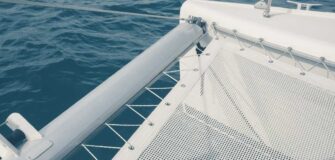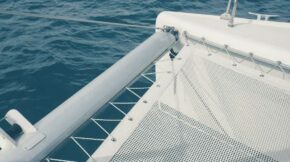Share
Now that “WINTER HAS COME”, call out your banners, and let’s go skiing. Skiing is the best episode of winter. But to ensure that you get the most out of it, you need to go for the best frontside skis. Whether you are a beginner or an intermediate, going for the best frontside skis is highly important.
Hence, Traveler Ideas has brought to you the 10 top rated all frontside skis for 2023. So, choose your favorite ski now.
Best Frontside Skis
1- Stöckli Montero AR
The 2022 Laser AR from Stöckli was already the best ski in the Frontside category, but the Swiss have a habit of improving their models whether they need it or not, so in 2023 they gave the AR a slightly wider waist, a skinnier tip, a wider tail, and a new damping system, all in the name of improving a perfect on-trail ski’s ability to batter ungroomed snow into submission. No other model in any genre comes close to matching this model’s ability to smoothly shift from a granite-hard groomer to untidy mud at full speed.
2- Völkl Deacon v.Werks
A lattice-work of carbon fibres that crossed the tip of the Deacon v.Werks, one of its most mysterious aspects, served as inspiration for the M6 Mantra’s and the new Kendo 88’s tailored carbon tips.
The most recent Mantra and Kendo have the same distinct connection to the front the frontside ski as the Deacon v.Werks thanks to Tailored Carbon Tips, which work in tandem with Tailored Titanal Frame.
3- Völkl Deacon 84
Three years ago, Völkl gave it’s Frontside family the Titanal Frame treatment. Four years ago, Völkl revived their cherished Mantra by inventing a new technology known as Titanal Frame. The Deacon 84, the new pater familias of the Frontside clan, marks a return to old Völkl ideals, much like the M5 Mantra, which was later superseded by the M6.
The Deacon 84 frontside ski has a larger performance envelope overall and greater edge-gripping power than the RTM 84 it replaced. It also has more energy out of the turn. Not only is it superior to its predecessor, but it also outperformed the whole, massive Frontside field in Total Score, helped along by the highest Finesse score in the division. This is impressive considering that it is fundamentally a Power ski.
4- Stöckli Montero AX
Stöckli releases what is perhaps the most opulent product brochure in the ski industry each year. No cost is spared, just like with its skis. It is a bound volume with hefty, glossy paper like you could typically see in a book of posh art reproductions. It is more like a coffee-table book than a brochure. In-depth explanations and breakdowns of product features are provided.
5- Blizzard Thunderbird R15 WB
Blizzard is riding a ten-year hot run in the fat ski segment, where Americans buy the largest bulk of their skis. If you just consider skis with a waist measurement of above 85mm, Blizzard appears to have made no mistakes since the introduction of their Flipcore foundation. However, if you stand back and examine the global market, you’ll see that there are one or two categories of carvers—skis designed to do precise, technical turns on hard snow—where Blizzard is all but unheard of, at least in the United States.
Its Quattro series failed to pique the interest of the American carving audience for whatever reason. Blizzard was only able to enter the Frontside sector in the US with a tiny-waisted, off-trail model (Brahma 82), which is similar to entering a category through the service door.
6- Head Supershape e-Titan
The e-Titan frontside skis, one of the four Supershape models, received the most notable change two years ago. The Titan and Rally used to be extremely good friends in every way. The e-Titan has increased the space between it and its slimmer sister in the current Supershape family.
The e-Titan wasn’t simply fattened up to an 84mm waist; the tip and tail were also pared down. The e-Titan improved its ability to handle rough terrain and even powder by removing part of the form from the sidecut, whilst the e-Rally continued to be a purebred carver. To put it more simply, the e-Rally is genetically predisposed to SL turns, whilst the e-Titan is more at home in a big-bellied GS arc.
7- Head Supershape e-Rally
Although Head didn’t pioneer the shaped ski, it was the first significant company to dedicate itself to the idea with its Cyber series when the Carving Revolution was just getting started. Its dedication to maintaining numerous skis in its inventory with curved sidecuts over the past 25 years hasn’t wavered. The Supershape series, a family that remains complete in 22/23 and returns untouched from the iterations that debuted just two years ago, has been the focus of Head’s non-race carving models for the past ten years.
8- Kästle MX83
Currently, in its third season, Kästle’s MX83 frontside ski is both typical of a contemporary trend and unconventional in a way that is uniquely it’s own. It adheres to the pattern of how a number of small adjustments add up to a substantial alteration, particularly in Finesse characteristics. It stands out from other improved models in that it is resuming the moniker of the illustrious MX83, unquestionably the best Frontside model ever produced.
The MX83 lacks the shock-sucking binding interface common to many Frontside models that dulls the sensation of the snow. The Tyrolia binding it is paired with links toe and heel when purchased as a system, however, it stays quite near to the ski.
9- Nordica Dobermann Spitfire 80 RB
Nordica’s series of carving skis helped the company establish its first critical and financial success as a ski brand. As a result of Nordica’s ascent to the top of the ski industry, its Frontside Spitfire models have been marginalized in the present market due to the astronomical success of the Enforcer series. The Dobermann Spitfire 80 RB would happily volunteer to do the task of changing American skiers’ obsession with wide, off-trail versions, but no one ski can do it.
10- Fischer RC One 82 GT
Both frontside skis and World Cup, FIS-approved race skis assert that they perform at their peak on firm snow. While this much is true, don’t even think about how they approach prepared slopes. In actuality, there has never been a greater or broader gap between racing skis and recreational skis designed for the same (or at least comparable) surface. Race skis not only demand abilities that 95% of skiers lack, but also physical training and mental fortitude that closer to 99% of the general population lack.
FAQs (Frequently Asked Articles)
Frontside Skis Vs All-Mountain Skis, What’s The Difference?
The term “front-side skis” usually refers to skis with thin waists up to 85mm, which are primarily designed for groomed conditions. The greatest all-mountain skis for groomed and powder terrain range from 85mm to 95mm. Deep sidecuts and rockered tips are common features on all-mountain skis, which make them easier to turn.
How To Choose Frontside Skis?
Choosing the best skis for yourself is easy. Just take a look at the your level of expertise in skiing. Also, keep checking on your weight and body size, and most importantly the cost.
How Much Do Frontside Skis Cost?
Well, the frontside skis have simple cost criteria. The higher the quality of the skis, the higher their cost will be. Similarly, if the quality of the skis is a bit low, then their cost will be low too. The same criteria is followed by all the ski types, whether it’s powder skis, freestyle skis, big-mountain skis, or freeride skis, the criteria will be same.















